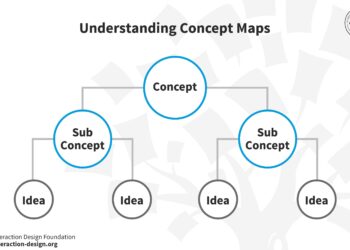In a groundbreaking move that underscores its commitment to sustainable development, Japan has officially approved a comprehensive set of climate, energy, and industrial policies aimed at reshaping its environmental landscape through 2040. This aspiring initiative, reported by Reuters, seeks not only to reduce greenhouse gas emissions significantly but also to bolster the country’s energy security amidst growing global challenges. With a focus on advancing renewable energy sources and fostering innovation in green technologies, these policies reflect Japan’s determination to meet its climate targets while navigating the complexities of a rapidly evolving energy market.As the nation endeavors to balance economic growth with ecological duty, the implications of these newly adopted strategies are poised to resonate well beyond its borders, influencing international climate dialog and collaborative efforts toward a sustainable future.
Japan’s Bold Climate Commitment: Key Policies for a Sustainable Future
In a landmark decision, japan has unveiled a comprehensive set of policies aimed at achieving a robust climate agenda and steering the nation towards a sustainable future by 2040. This strategy not only reinforces Japan’s commitment to reducing greenhouse gas emissions but also seeks to revitalize its economy by investing in green technologies. the key initiatives include:
- Carbon Neutrality Goal: Aiming for carbon neutrality by 2050, Japan is set to implement strict emissions reductions by enhancing regulatory frameworks.
- Renewable Energy Expansion: A significant increase in the share of renewable energy sources, with targets for solar and wind power generation to account for over 50% of the energy mix by 2030.
- Innovative Technologies: Promoting research and development in hydrogen fuel and carbon capture technology to transform the energy landscape.
- Energy Efficiency Programs: Introducing measures to enhance energy efficiency across various sectors, including industry and transportation.
Additionally, the policies emphasize public-private partnerships to foster innovation and encourage investment in the green economy. A detailed framework has been set to ensure accountability and track progress towards these ambitious goals, wich will include the initiation of various incentive programs for businesses that adopt sustainable practices.The anticipated impacts of these policies are poised to not only mitigate climate change but also stimulate job creation and bolster economic growth. A summary of the major objectives is outlined in the table below:
| Policy Focus | 2030 Targets | 2040 Objectives |
|---|---|---|
| Carbon Emissions Reduction | 46% below 2013 levels | Carbon Neutrality |
| Renewable Energy Share | 50% of total energy | Over 80% by 2040 |
| energy Efficiency | 20% enhancement | 30% improvement |

Energy Transition Strategies: The Shift Towards Renewable Sources
The recent approval of Japan’s new climate, energy, and industry policies through 2040 highlights a decisive shift towards renewable energy sources. This visionary approach aims to significantly reduce carbon emissions while enhancing the nation’s energy security. Key strategies include the integration of innovative technologies and increased investment in renewable projects. the government has set forth specific targets to achieve a 50% reduction in greenhouse gas emissions from 2013 levels by 2030, ultimately striving for net-zero emissions by 2050. To facilitate this transition,several initiatives are being prioritized:
- Expansion of solar and Wind Energy: Investing heavily in solar photovoltaic and offshore wind projects.
- Hydrogen Development: fostering research into green hydrogen as a sustainable energy carrier.
- Nuclear Energy Revitalization: Lifespan extension and safety upgrades to existing reactors.
- Energy Efficiency Measures: Incentives for businesses and consumers to adopt energy-saving technologies.
To support these efforts,japan is also implementing specific policy frameworks and funding mechanisms to attract private investments and encourage innovation within the sector. The government is fostering collaboration between academia, industry, and government bodies to spur technological advancements that can make renewable energy more accessible and feasible. A recent table summarizing Japan’s policy initiatives through 2040 illustrates this comprehensive approach:
| Policy Initiative | Objective | Timeline |
|---|---|---|
| Renewable Energy Promotion | Achieve 50% share in the energy mix | By 2030 |
| Zero Emission Vehicles | Support EV adoption | By 2035 |
| Carbon Pricing Mechanism | Create financial incentives for emissions reductions | By 2025 |

Industrial Innovation: Driving Green Technology and Sustainable Practices
The latest policies approved by the Japanese government are set to transform the landscape of industrial innovation, notably in the sphere of green technology and sustainable practices. By 2040, Japan aims to achieve remarkable targets that focus on reducing carbon emissions and enhancing energy efficiency across various sectors. The government plans to invest significantly in renewable energy sources, such as solar and wind, while also promoting electric vehicle adoption and smart manufacturing technologies. This shift represents not just a commitment to reducing the nation’s carbon footprint, but also a strategic move to strengthen Japan’s position as a leader in the global green technology market.
Integral to this initiative is collaboration between the public and private sectors, which will foster a culture of innovation and research. Notably, the establishment of key partnerships will facilitate advancements in areas such as hydrogen fuel and energy storage solutions. As companies innovate to meet regulatory changes, they are also likely to enhance their operational efficiencies, creating a ripple effect that could invigorate various industries. Below is a summary of some key focus areas and expected benefits:
| Focus Area | Expected Benefits |
|---|---|
| Renewable Energy | Reduction in greenhouse gas emissions |
| Electric Vehicles | Decreased reliance on fossil fuels |
| Smart Manufacturing | Increased operational efficiency |
| Hydrogen Fuel | Innovative energy solutions |

Economic Implications: Balancing Growth with Environmental Responsibility
The recent approval of japan’s new climate, energy, and industry policies sets a significant precedent for balancing economic growth with environmental stewardship. The government has outlined strategies to foster sustainable practices while ensuring competitive energy markets. Key elements of this policy shift include:
- Investment in renewable energy sources such as solar and wind to diminish reliance on fossil fuels.
- Incentives for businesses to adopt eco-friendly technologies, aimed at reducing carbon footprints.
- Regulatory frameworks designed to promote innovative solutions that marry economic expansion with environmental concerns.
One of the central points of debate is how these policies will impact Japan’s industrial landscape. By prioritizing environmental responsibility, Japan hopes to create a green economy that not only mitigates climate change but also enhances long-term economic resilience. A clear roadmap is essential for industries to adapt and thrive under these new guidelines. The following table summarizes the projected economic impacts associated with the implementation of the new climate policies:
| Sector | Projected Growth (%) | Environmental Impact |
|---|---|---|
| Renewable Energy | 20% | Significant reduction in CO2 emissions |
| Manufacturing | 10% | Increased energy efficiency |
| Transportation | 15% | Lower air pollution levels |

Global Leadership in Climate Action: Japan’s Role on the World Stage
Japan has taken a significant step forward in its commitment to climate action, unveiling a comprehensive set of climate, energy, and industry policies projected through 2040. This new roadmap aims to strike a balance between economic growth and sustainability, aligning with global efforts to combat climate change.Among the key points outlined in these policies are:
- Renewable Energy Expansion: Japan plans to increase its reliance on renewable energy sources, targeting a considerable percentage of its energy mix to come from solar, wind, and hydropower.
- Carbon Neutrality Goals: The country aims to achieve carbon neutrality by 2050, with interim targets to drastically cut greenhouse gas emissions by 2030.
- Technological Innovations: Investments in green technology and innovation are prioritized, including advancements in hydrogen production and carbon capture methods.
On the international stage, Japan’s proactive policies serve as a pivotal influence in shaping global climate discourse. By committing to significant financial resources for climate initiatives, japan positions itself as a leader among developed nations in fostering international cooperation on climate resilience. Key highlights of its strategy include:
| Focus Area | Objectives | Timeline |
|---|---|---|
| Renewable Energy | Increase renewable share to 50% | By 2030 |
| Emissions Reduction | Cut GHG emissions by 46% | By 2030 |
| Foreign Aid | Contribution to global climate fund | Ongoing through 2040 |

Recommendations for Success: Enhancing Collaboration and Investment in Green Initiatives
Enhancing collaboration among governments, private sectors, and local communities is essential for driving the success of green initiatives. governments must foster environments where diverse stakeholders can come together to innovate and share resources effectively. To achieve this, policies should encourage the formation of public-private partnerships that promote sustainable technologies. Key strategies could include:
- Incentivizing investment in renewable energy projects.
- Creating forums where industry leaders can discuss best practices.
- Establishing shared goals that align with national and global climate objectives.
Along with collaboration, increasing investment in green initiatives is crucial. Governments must prioritize funding towards projects that promise long-term environmental benefits and economic returns.A strategic allocation of resources could involve:
| Investment Focus | Potential Impact |
|---|---|
| Renewable Energy Infrastructure | reduction in greenhouse gas emissions |
| Energy Efficiency Programs | Lower energy costs for consumers and businesses |
| Research and Development for Green Technologies | Innovation in sustainable practices |
By implementing these steps, Japan can set a benchmark for other nations aiming to balance economic growth with environmental responsibility, creating a greener future that benefits all stakeholders involved.
Closing Remarks
Japan’s recent approval of sweeping climate, energy, and industrial policies through 2040 marks a significant step in the nation’s commitment to addressing climate change while ensuring energy security and economic resilience. As the country navigates a complex landscape of environmental challenges and energy demands, these policies reflect a strategic approach to foster innovation and transition toward sustainable practices. By enhancing renewable energy sources, promoting energy efficiency, and investing in technological advancements, Japan aims to balance its industrial ambitions with ecological responsibilities. As the global community looks to countries like Japan for leadership in climate action, the implications of these policy decisions will be closely monitored, with hopes that they will inspire similar initiatives worldwide. The coming years will be crucial in evaluating the effectiveness of these measures and the extent to which they can lead Japan toward a greener, more sustainable future.

















